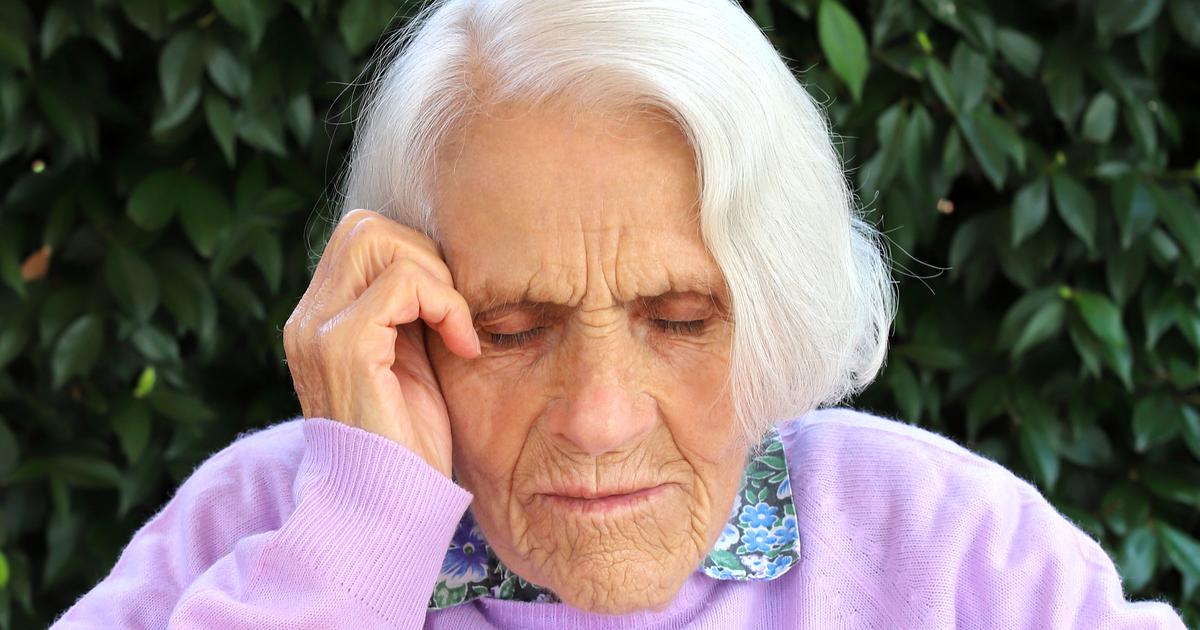Dealing With Parkinson's Disease: A Guide For Patients And Families
Parkinson's disease is an ongoing, progressive disease of the nervous system that affects a patient's movement. Millions of individuals worldwide are diagnosed with Parkinson's disease. The cause of Parkinson's disease is presently not known. However, research attributes the disease to a combination of genetic and environmental factors. Age also plays a role. Most cases of Parkinson's disease beginning after an individual is sixty years old.
Unfortunately, there is currently no Parkinson's disease cure. There are, however, treatments for Parkinson's disease. Many patients take Parkinson's disease medications to control their symptoms. Occupational therapy is also a huge part of treating Parkinson's disease. Overall, this condition requires intense treatment and symptom management for patients to live a full life.
The Symptoms To Watch For

Individuals with Parkinson's disease will often experience symptoms differently. However, there are similarities in the main types of symptoms seen in this condition. These symptoms include tremors, slowness of movement (bradykinesia), the stiffness of the trunk and limbs (rigidity), and impaired coordination and balance (postural instability). Patients may also experience the loss of automatic movements and changes in writing and speech.
Tremors usually begin in the patient's fingers or hands even when at rest. Their forefinger and thumb may rub each other in a 'pill-rolling' tremor. Bradykinesia results in tasks feeling more challenging and taking much longer to do. An individual's steps may shorten, and their feet may drag. Stiff muscles can reduce the range of motion and cause pain. The patient's posture may stoop, and balance may weaken when standing or walking. Speech changes may result in reduced volume, slurring, hesitating, or speaking too quickly. Writing may become difficult.
Potential Complications

In addition to primary symptoms, Parkinson's disease may be accompanied by other issues, particularly if treatment does not begin promptly or is not effective. These potential complications include pain, fatigue, sexual dysfunction, issues with smell (trouble identifying odors or distinguishing between odors), and blood pressure changes. Patients may also experience constipation and bladder problems, such as difficulty urinating or being unable to control urine. They may also deal with sleep disturbances, difficulties swallowing, in addition to cognitive and emotional changes.
Parkinson's disease patients sometimes experience depression and thinking difficulties. However, the latter tends to occur at the later stages of this disease. All of these complications may be treatable, so it is essential to discuss them with a doctor. While they primarily affect the patient, families and others close to the patient may find some complications leak onto them. Specifically, they may have a tougher time emotionally, and so should seek support as well.
Parkinson's Disease Tests And Diagnosis

There are, unfortunately, no standard tests for diagnosing Parkinson's disease. Instead, doctors will make a diagnosis based on a review of their patient's symptoms, medical history, and physical and neurological examination. Doctors will also consider other conditions that may be causing the symptoms and order tests for them. This may include imaging tests that do not assist in diagnosing Parkinson's disease.
Patients may also be prescribed disease-specific medication. If their condition improves significantly while taking the medication, it is likely confirmation of the diagnosis. Diagnosing Parkinson's disease can take some time and require regular follow-up appointments to evaluate symptoms. Family members may also need to be consulted for information during this process as well.
Preparing For Doctor's Appointments

Patients and their families should always ensure they are prepared for a doctor's appointment when dealing with Parkinson's disease. With this in mind, they should note down symptoms, even if they do not seem related, as well as any recent major changes or stresses. Additionally, these notes should include all the medications the patient is taking. This must include natural supplements and vitamins as well.
Patients and their family members should also consider writing down all of the questions they have, no matter how insignificant they may seem. Some things many individuals will want to know about include what tests they will require, treatments being considered, and details on other conditions being dealt with. Many patients will also want more information about Parkinson's disease. While patients can go alone, it is incredibly helpful to bring a family member or other loved one along for emotional support, especially where questions are concerned. They can fill in any gaps if the patient is unable to do so.
Lifestyle And Home Treatments

Doctors will help patients find an appropriate treatment plan, often involving medication, that helps relieve symptoms with the fewest side effects. However, living with Parkinson's disease can be made quite a bit easier with specific lifestyle changes. A healthy, balanced diet high in fiber and fluids can help relieve symptoms such as constipation. Omega-3 fatty acids may also beneficial for Parkinson's disease patients. Exercising will help reduce emotional disturbances, such as depression and anxiety, and help improve balance.
Daily living activities can be difficult for individuals dealing with Parkinson's disease. Thus, they should see an occupational therapist who can teach them techniques to help make life easier. Lifestyle changes, furthermore, are also something family members can also join in on with no worries as to side effects. However, they must follow the recommended guidelines from doctors as well. This kind of participation can provide invaluable support to the Parkinson's disease patient.
Medical Treatment Methods

Once an individual with Parkinson's disease begins to experience minor symptoms, treatment with medication is typically necessary. The most common medication prescribed in the first stages of Parkinson's disease is levodopa, which helps replace depleted dopamine in the brain. Studies conducted on the quality of life of Parkinson's disease patients have shown drug therapy with dopaminergic medications helps prevent falls, improves the patient's sense of well-being, and improves their daily function.
As symptoms of Parkinson's disease progress, more medications are usually added to the treatment regimen. A common characteristic seen in drug treatment for Parkinson's disease is a process referred to as wearing off. Wearing off describes how the frequency of medication administration must be increased as the patient's Parkinson's disease worsens. Another medical treatment that may be used to treat Parkinson's disease is deep brain stimulation through the use of an implantable pacemaker-like medical device.
Caring For A Loved One With Parkinson's Disease

The caregiver of an individual affected by Parkinson's disease is often their spouse, child, sibling, or another loved one. Caregiving is the actions performed to help a relative or friend with a disability or illness. An individual who is a caregiver for their loved one with Parkinson's disease will experience changes in their role as the disease progresses. A caregiver will most likely manage their medications, schedule their appointments, help with daily care and hygiene, and act as a healthcare advocate. They will also provide emotional support as their loved one learns to cope with their condition.
As a loved one's symptoms worsen, the demands of their caregiver will increase. Some challenges noted by caregivers for a loved one who has Parkinson's disease include frustration around the ability to communicate, chronic fatigue, and the pressing responsibility for injury prevention.
Stages Of Parkinson's Disease

Parkinson's disease is divided into five stages, using a system referred to as the Hoehn and Yahr scale. Several years before diagnosis, individuals with Parkinson's disease may experience depression, fatigue, constipation, sleep problems, anxiety, color vision disturbances, hyposmia, and slowed thinking. Stage I occurs when a patient experiences motor-related symptoms on a single side of their body. Stage II is characterized by the manifestation of motor symptoms on both sides of the patient's body. Stage III is defined by when an affected individual begins to experience balance impairments.
Stage IV describes when a patient has gait difficulty, freezing steps, small and fast steps, problems with swallowing, further balance impairment, and more non-motor-related symptoms like problems with speech. Stage V is the last stage of Parkinson's disease. It is characterized by the inability to move around without assistance and becoming entirely dependent upon a mobility device or wheelchair. Later stages of Parkinson's disease can also produce urinary urgency and frequency, problems with closing the eyelids, and excessive sweating.
Related Diagnosis

Individuals who present with symptoms of Parkinson's disease may be diagnosed with a related disease. Progressive supranuclear palsy is a form of parkinsonism that starts with similar symptoms. However, it progresses faster than Parkinson's disease. Multiple system atrophy is an umbrella term for numerous disorders characterized by the deterioration of an individual's nervous system that may respond to medications used in Parkinson's disease.
Lewy body dementia is a neurodegenerative disorder that produces symptoms similar to those of Parkinson's disease. It may have a positive response to treatments used in Parkinson's disease patients. Corticobasal degeneration is a rare form of parkinsonism that is also known to progress at a more rapid pace than Parkinson's disease. Unlike Parkinson's disease, symptoms of corticobasal degeneration tend to be more prominent on one side of the body. The most common comorbidities that occur in Parkinson's disease patients include hypertension, chronic pulmonary disease, cerebrovascular disease, diabetes, and paralysis.
Support For Caregivers

Caregivers do not need to solely focus on providing support and help to the Parkinson's disease patient. A good caregiver to someone with Parkinson's disease needs to set aside time to be away from their caregiving duties. They must ask for and seek out help when necessary and maintain their social connections outside of caregiving.
Multiple resources can help caregivers, including community and local services like friends, synagogues, adult day health, meals on wheels, neighbors, churches, and door-to-door vans. A social worker from the loved one's hospital, healthcare provider, or healthcare plan can be a valuable asset in locating and connecting with other services that can be of assistance. Local support groups may benefit an individual acting as a caregiver for a loved one with Parkinson's disease. Caregivers can also benefit from attending medical appointments with their loved one to ask questions and address concerns.
